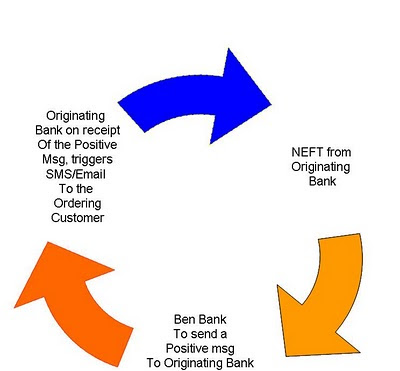Standardisation ( Consistency, Equality) and Enhancement (Enrichment) of Security Features in Cheque Forms
CTS-2010 Standard
Reserve Bank of India
The Circular No is RBI/2009-10/323 DPSS.CO.CHD.No. 1832/ 04.07.05 /2009-10, dt February 22, 2010 addressed to The Chairman and Managing Director / Chief Executive Officer
All Scheduled Commercial Banks including RRBs / Urban Co-operative Banks / State Co-operative Banks / District Central Co-operative Banks
All Scheduled Commercial Banks including RRBs / Urban Co-operative Banks / State Co-operative Banks / District Central Co-operative Banks
The link is
Please note that this circular is address to Scheduled Banks including RRB’s/UCB’s/SCB’s and DCCB’s.
In a single circular the whole spectrum of banking industry has been addressed.
As Post Office Banking does not fall under the purview of Reserve Bank of India
When will this new guidelines be effective from?
A specific deadline has not been announced, but these guidelines will be effective before CTS is live in Chennai.
The nitty-gritty will be finalized by Reserve Bank of India , in consultation with Indian Banks Association and National Payments Corporation of India
My guess is that as the project is named as CTS 2010 – Standard, the guidelines will go live this year only.
Benefits to customers:-
01) Date Boxes are introduced i.e Date DDMMYYYY, instead of the present blank line.
This ensures that the complete date will be filled up, and there will be minimal chances of a wrong date being filled in.
02) The Bank’s Name and Bank’s Branch Details are shifted from the present left hand bottom to the left hand top.
03) Reserve Bank of India
I interpret corporate customers as Salary Accounts too, even if they are under the ambit of Saving Accounts. This is to curtail the frauds.
Once the account numbers are pre-printed it becomes easy for the account-holders names also to be printed on the Cheque books. At the most the first Cheque-book issued in the account might only have the pre-printed account number.
The benefits are more to the Branch Officials than the customers.
Benefits to Bank Officials:-
· As this Cheque standards will also be adopted for Non-CTS locations, immense benefits will accrue to Cheque handling officials.
· The data boxes will minimize date errors.
· The standardization of the fields will aid in swift processing of a large number of cheques.
To me the most important benefit is the Prohibiting alterations/corrections on the cheques. In rare cases, only date field can be altered/corrected.
In case of alterations/corrections in payee’s name, amount in words, amount in figures, the customers are advised to issue new cheques.
The key to success of the above point depends on customer education. Customers have to be properly educated about the dangers of alterations/corrections in payee’s name, amount in words, and amount in figures
Proper education will reduce the customer dis-satisfaction and increase the customer’s faith in the new standards.
Through the standardization, the processing of cheques can be automated to a great extent, reducing human errors and minimizing frauds.
The proposed standards not only aid in quick processing of large number of cheques, but also increase the comfort level of human resources at all levels of Cheque handling.
This in turn will lead to enhanced customer satisfaction.
Though the proposed standards have been framed for CTS processing, all the Bank cheques by default will have to adhere to this new Standards. Having two sets of standards for CTS cheques and non-CTS cheques will be cumbersome for the banks as well as CTS processing centers.
Payable at Par cheques have become quite common, and Speed Clearing is also picking up. This means literally a Cheque can be paid across any Clearing Location in India
Hence, Banks by default will gradually switch over to the new standards.
Challenges:
Dealing with the existing stock of cheque books:-
Once the deadline is decided, banks will automatically place order for the new Cheque Books. The existing un-issued Cheque books, will have to destroyed.
What about the Cheque leaves already issued to the customers? The customers might be requested to destroy unused cheque leaves held by them. The major challenge will be the handling of cheques leaves already written/signed by customers and handed over to the payee’s i.e Post-dated cheques for Loan repayments. Well, such cheques might be in the System for 3-4years, and which have to be handled as exception cases.
Banks have to switch over from decentralized issuance of cheques books to centralized issuance of cheques books
This will be a major challenge for Public Sector Banks, as they will have to draw up plans to dismantle the existing procedure and switch over to the centralized issuance of Cheque books.
Customer Education:
Customer education is vital for smooth switch over to the new standards.
Customer’s education has to focus on the following points:
01) The dangers of alterations/corrections in payee’s name, amount in words, and amount in figures.
02) The need to order fresh cheques in advance, as otherwise issuance of Cheque books with pre-printed account numbers will be difficult.
03) The need to withdraw unused cheques with old standards held by them.
One ground-breaking feature of this Notification is the introduction of the Void Pantograph Security feature.
Void Pantograph
A pantograph screen that has the word "VOID" hidden in it, created by using special screens and background designs. When photocopied by a color copier, the word "VOID" appears on the copied document. A document with a void pantograph is more difficult to duplicate than one with a standard pantograph.
A pantograph screen that has the word "VOID" hidden in it, created by using special screens and background designs. When photocopied by a color copier, the word "VOID" appears on the copied document. A document with a void pantograph is more difficult to duplicate than one with a standard pantograph.





